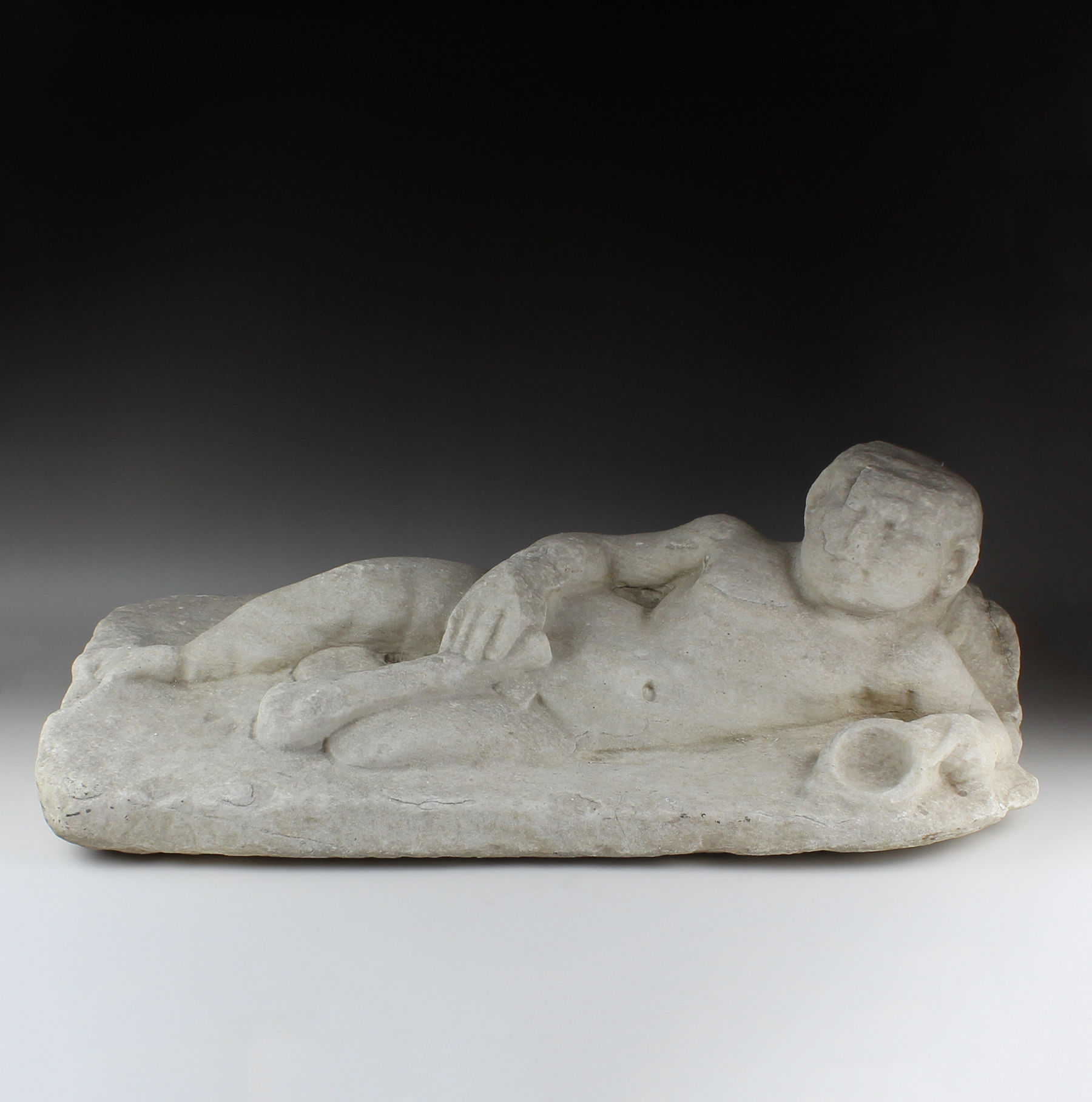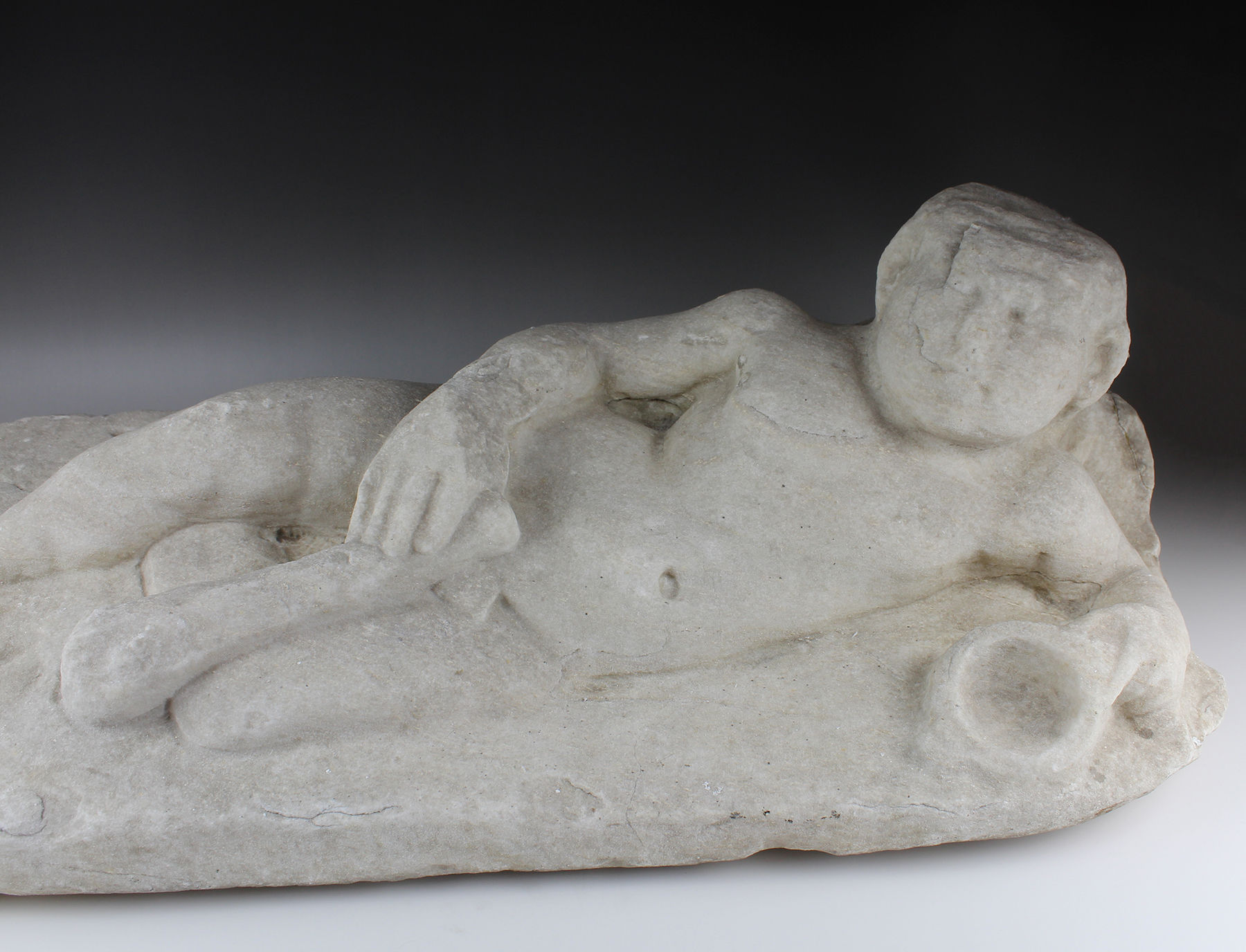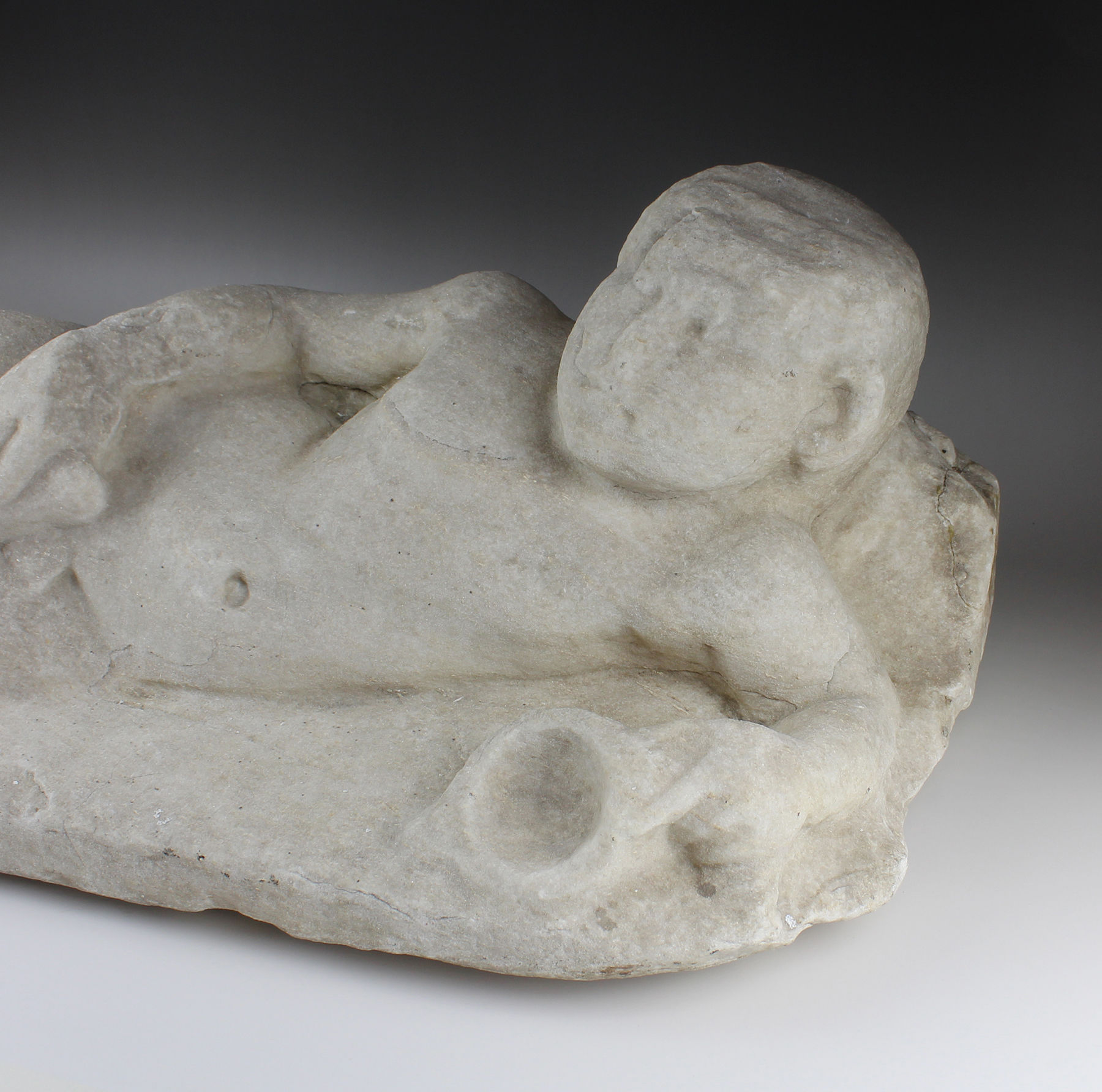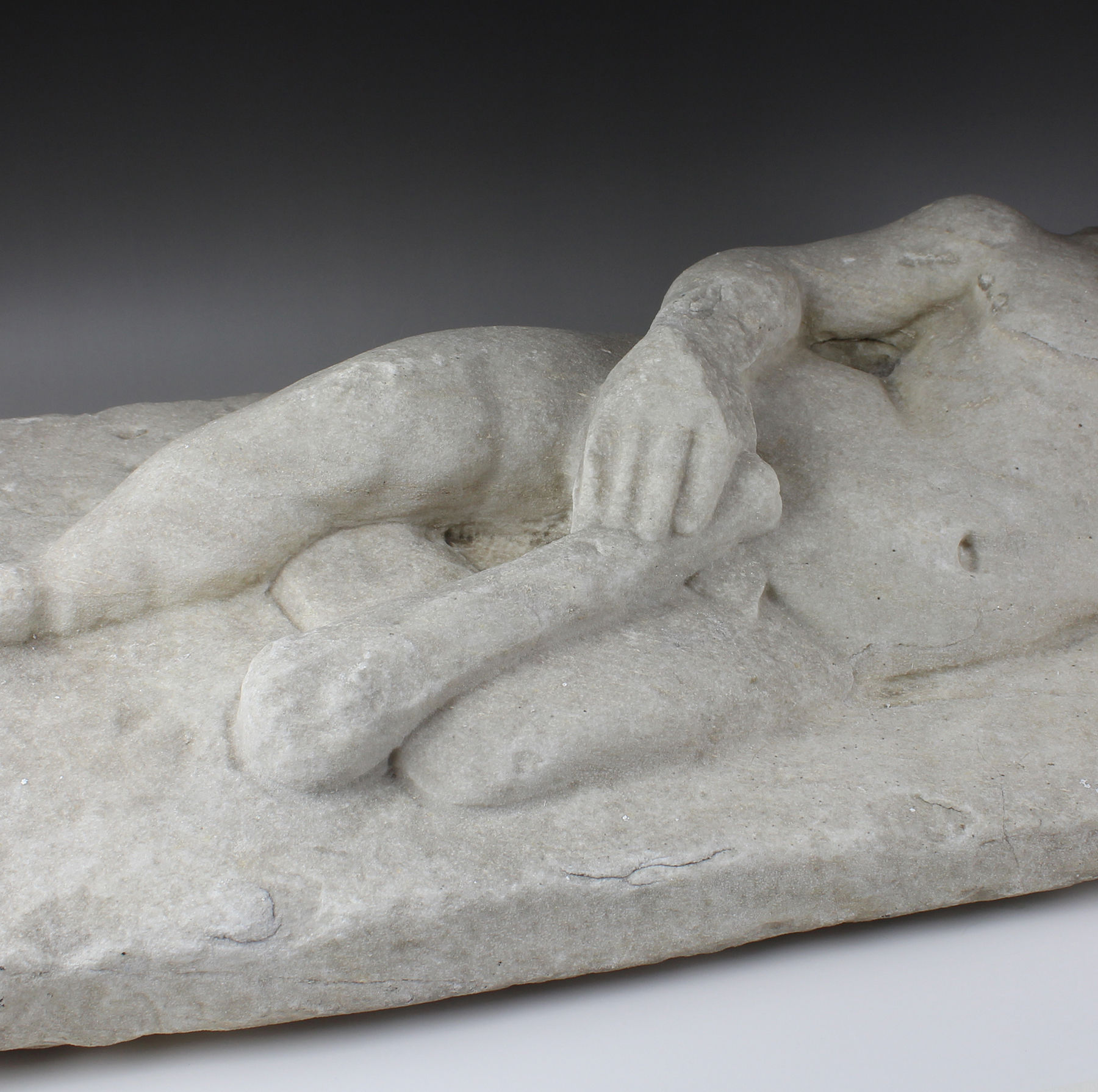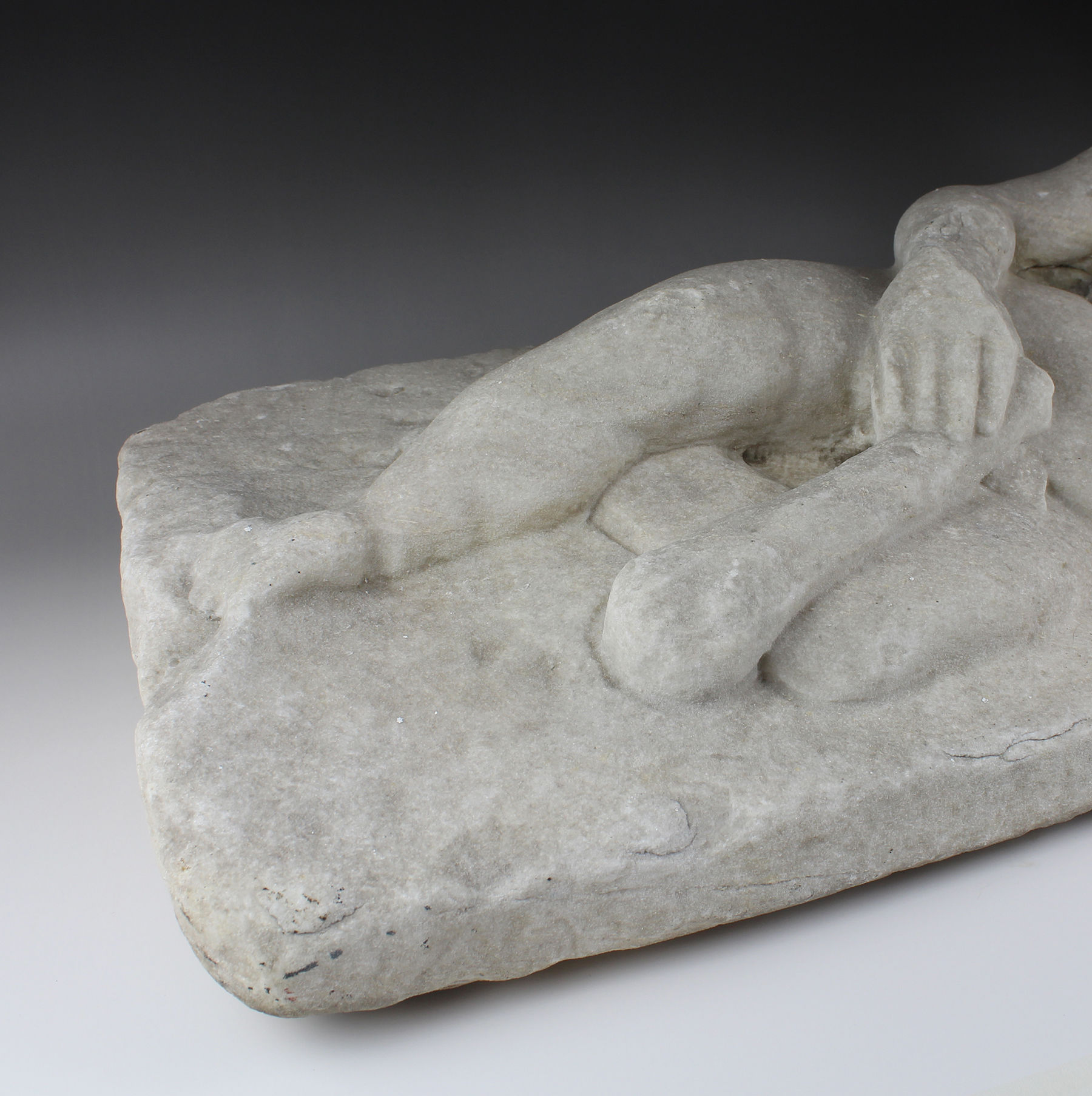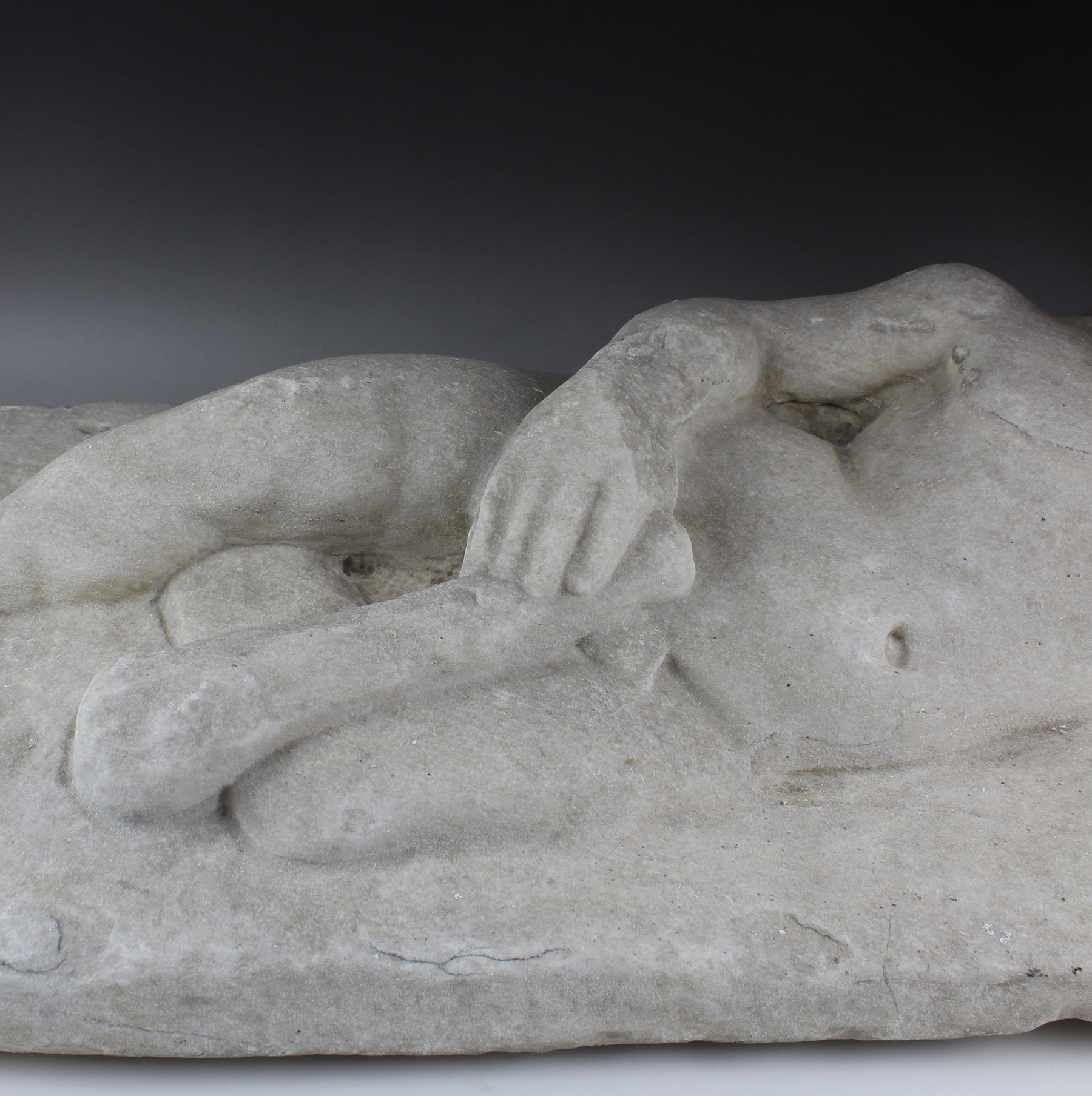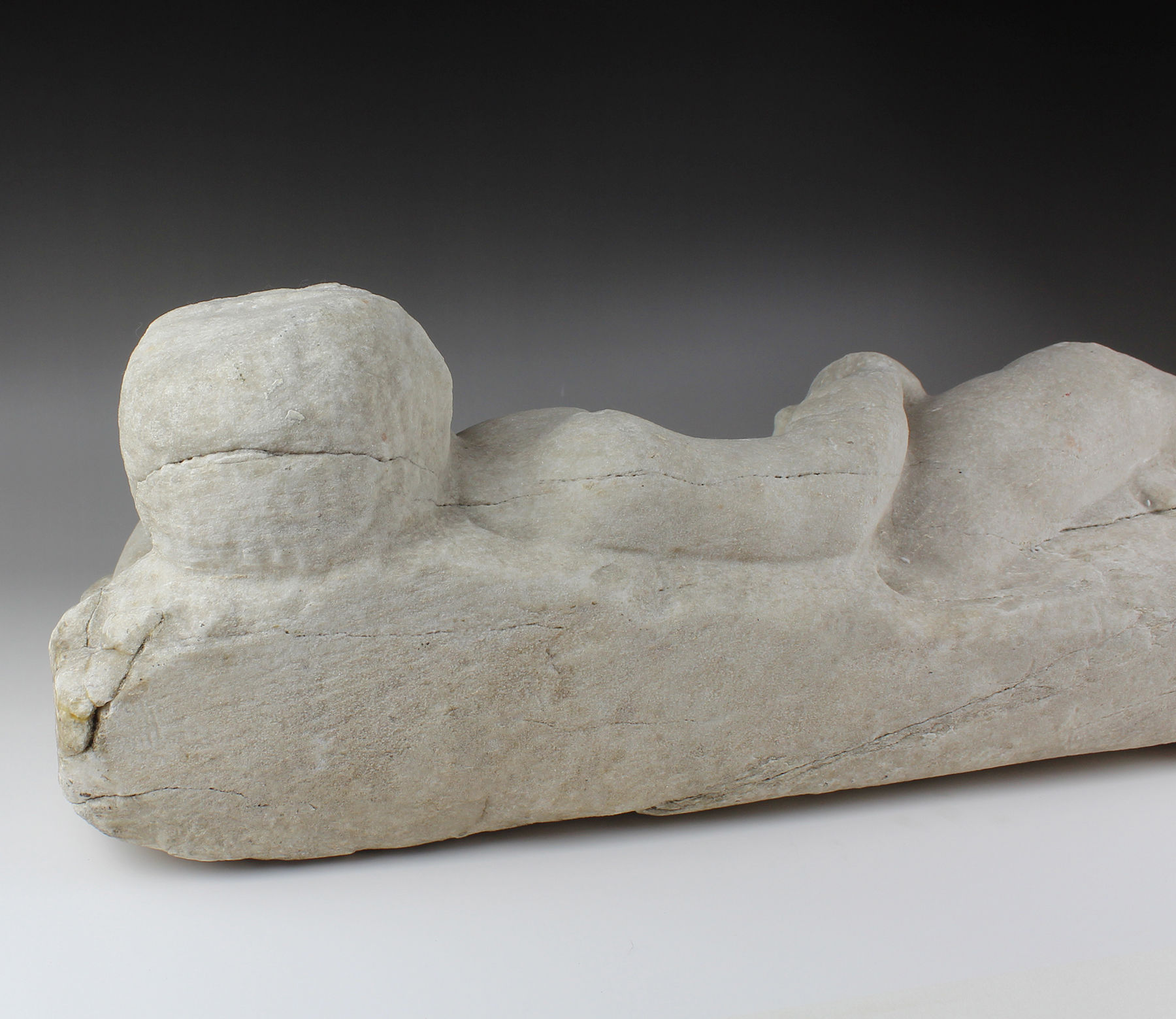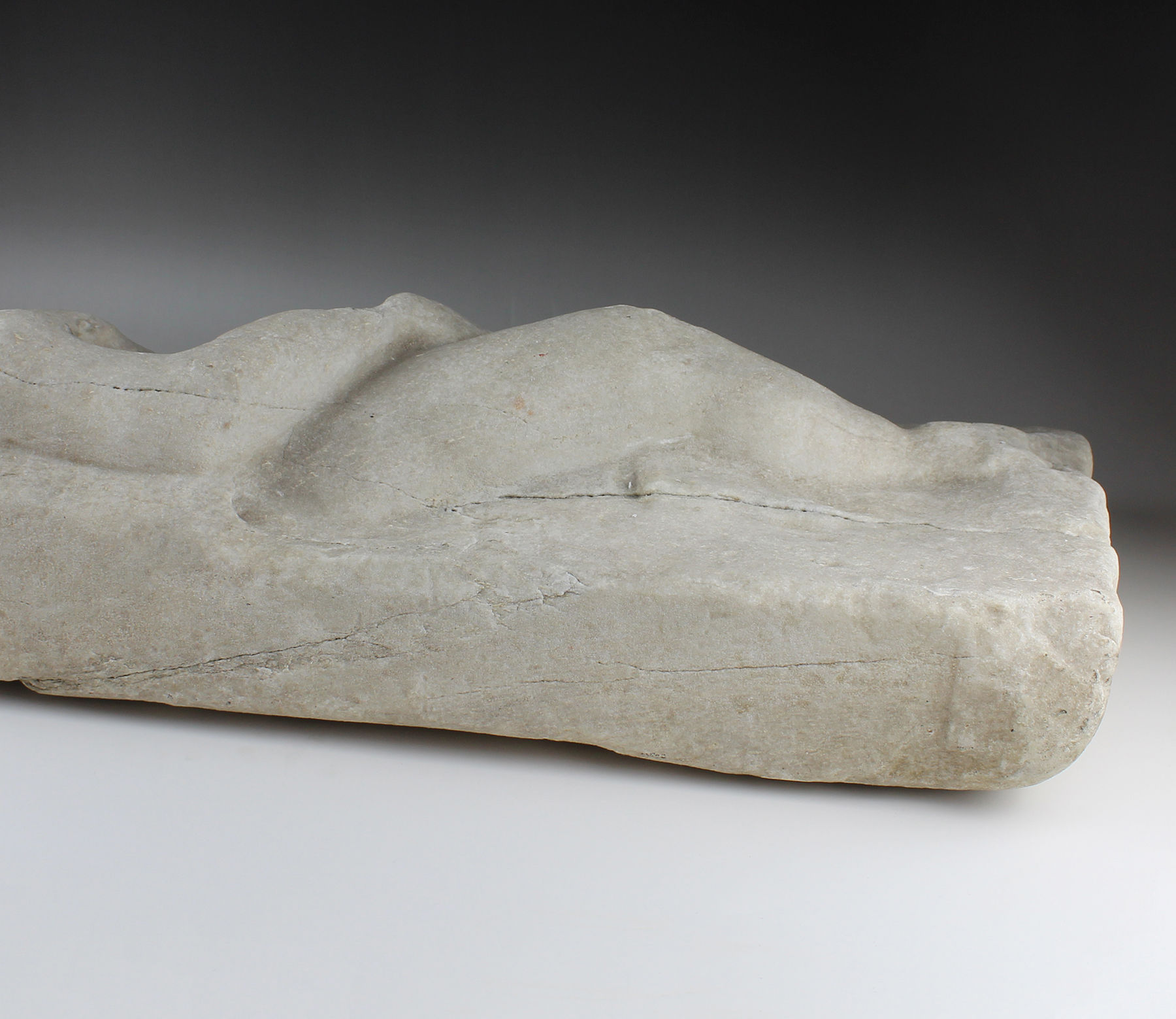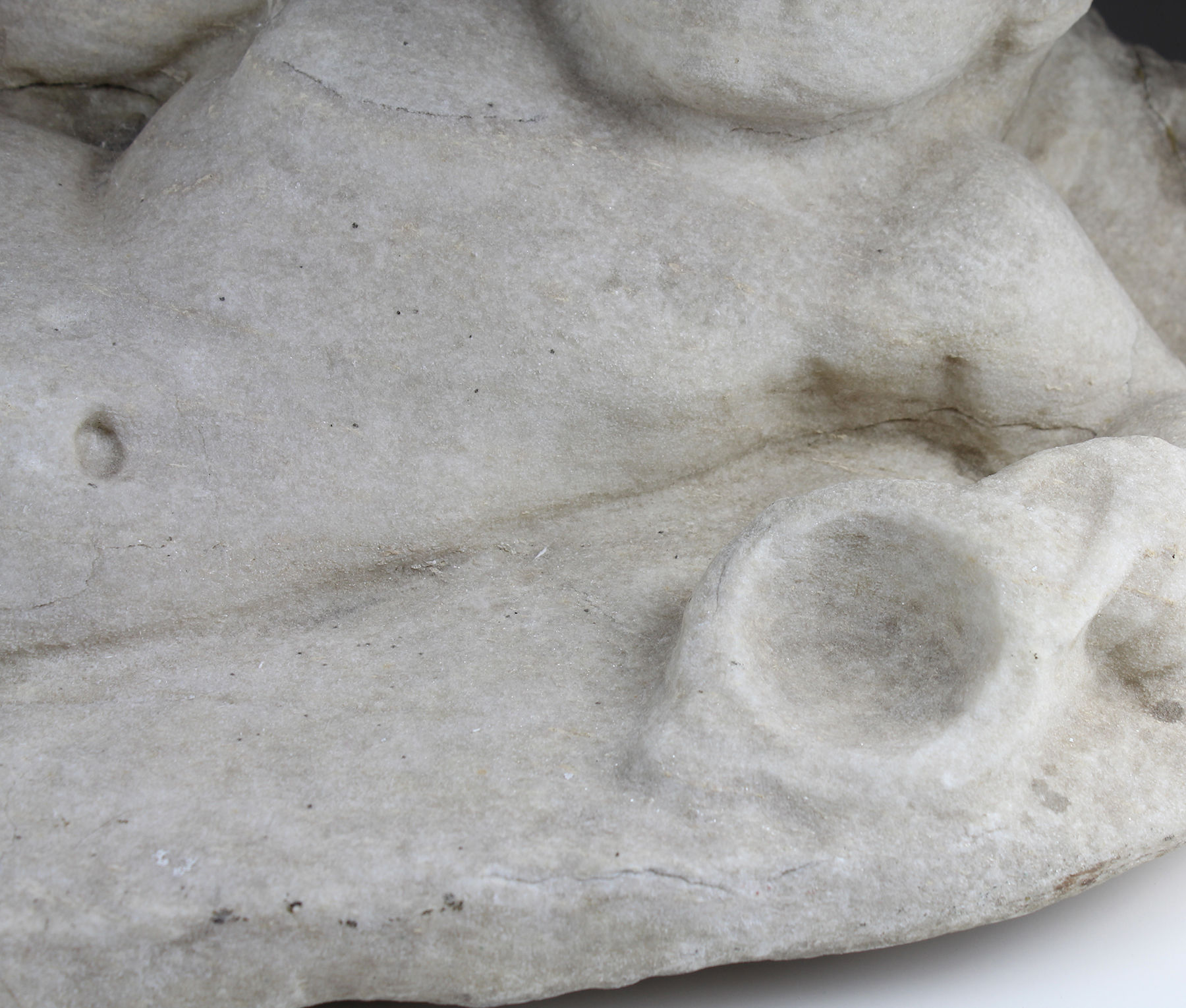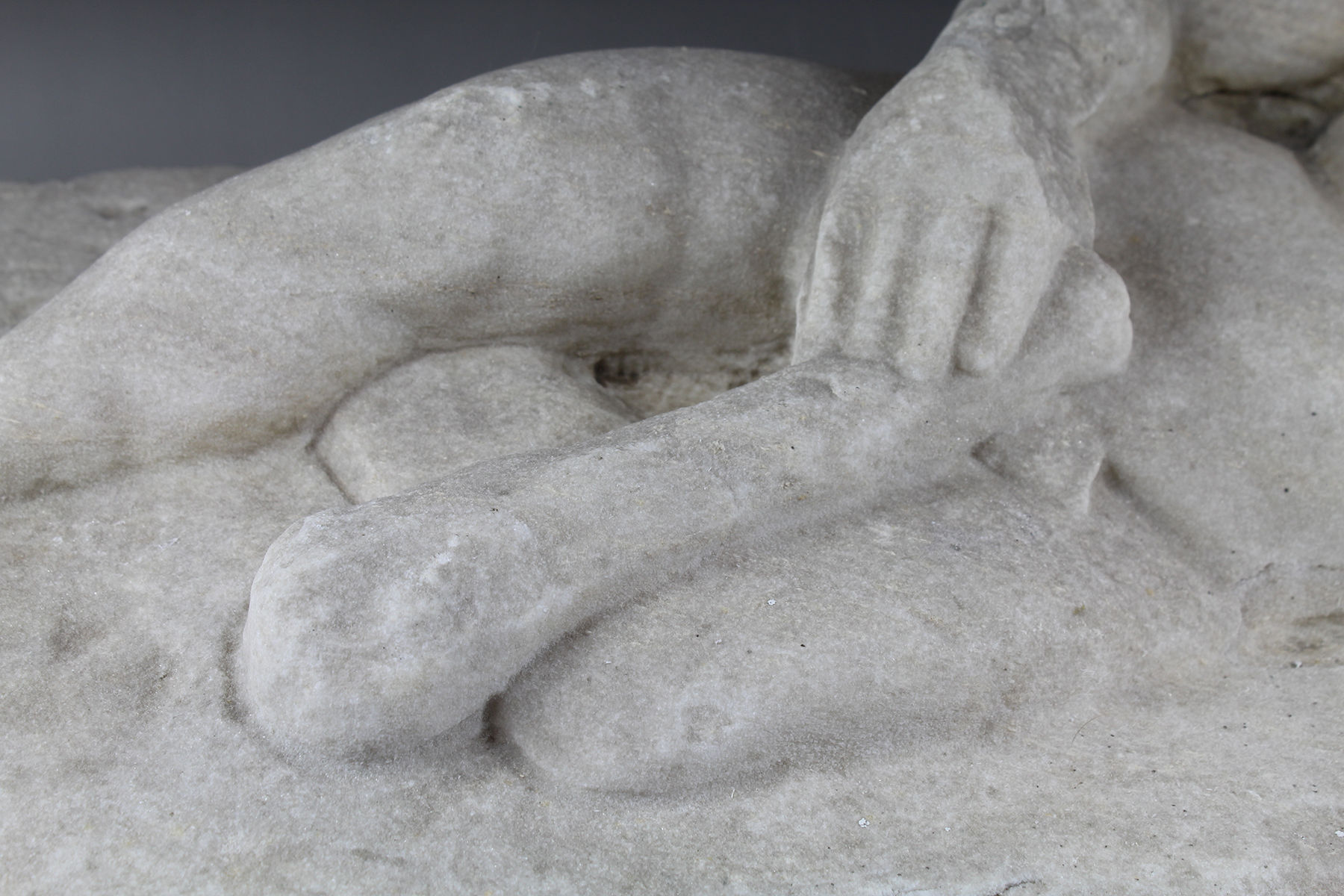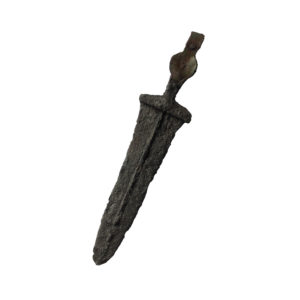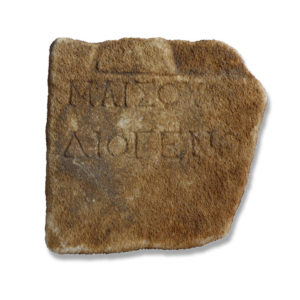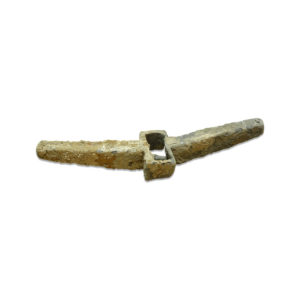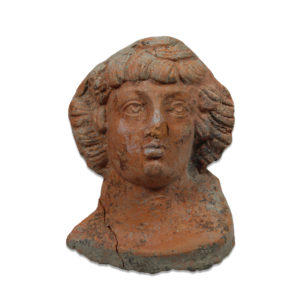Description
| ITEM | Sarcophagus lid with Hercules as a boy holding vessel and club |
| MATERIAL | Marble |
| CULTURE | Roman |
| PERIOD | 2nd Century A.D |
| DIMENSIONS | 200 x 610 x 250 mm |
| CONDITION | Good condition |
| PROVENANCE | Ex Sotheby’s, Ex European private collection, acquired between 1970’s – 1980’s, probably at auction at Christie’s or Sotheby’s |
| NOTES | For a reclining figure of Hercules as a fullygrown symposiast see, http://arachne.uni-koeln.de/item/objekt/104173 |
Heracles, Greek Herakles, Roman Hercules, one of the most famous Greco-Roman legendary heroes. Traditionally, Heracles was the son of Zeus and Alcmene (see Amphitryon), granddaughter of Perseus. Zeus swore that the next son born of the Perseid house should become ruler of Greece, but—by a trick of Zeus’s jealous wife, Hera—another child, the sickly Eurystheus, was born first and became king. When Heracles grew up, he had to serve Eurystheus and also suffer the vengeful persecution of Hera; his first exploit was the strangling of two serpents that she had sent to kill him in his cradle.
Heracles waged a victorious war against the kingdom of Orchomenus in Boeotia and married Megara, daughter of Creon, king of Thebes, but he killed her and their children in a fit of madness sent by Hera and, consequently, was obliged to become the servant of Eurystheus. It was Eurystheus who imposed upon Heracles the famous Labours, later arranged in a cycle of 12.
Having completed the Labours, Heracles undertook further enterprises, including warlike campaigns. He also successfully fought the river god Achelous for the hand of Deianeira. As he was taking her home, the Centaur Nessus tried to violate her, and Heracles shot him with one of his poisoned arrows. The Centaur, dying, told Deianeira to preserve the blood from his wound, for if Heracles wore a garment rubbed with it he would love none but her forever. Several years later Heracles fell in love with Iole, daughter of Eurytus, king of Oechalia. Deianeira, realizing that Iole was a dangerous rival, sent Heracles a garment smeared with the blood of Nessus. The blood proved to be a powerful poison, and Heracles died. His body was placed on a pyre on Mount Oeta (Modern Greek Oíti), his mortal part was consumed, and his divine part ascended to heaven, becoming a god. There he was reconciled to Hera and married Hebe.
In art and literature, Heracles was represented as an enormously strong man of moderate height, a huge eater and drinker, very amorous, and generally kindly but with occasional outbursts of brutal rage. His characteristic weapon was the bow but frequently also the club.


